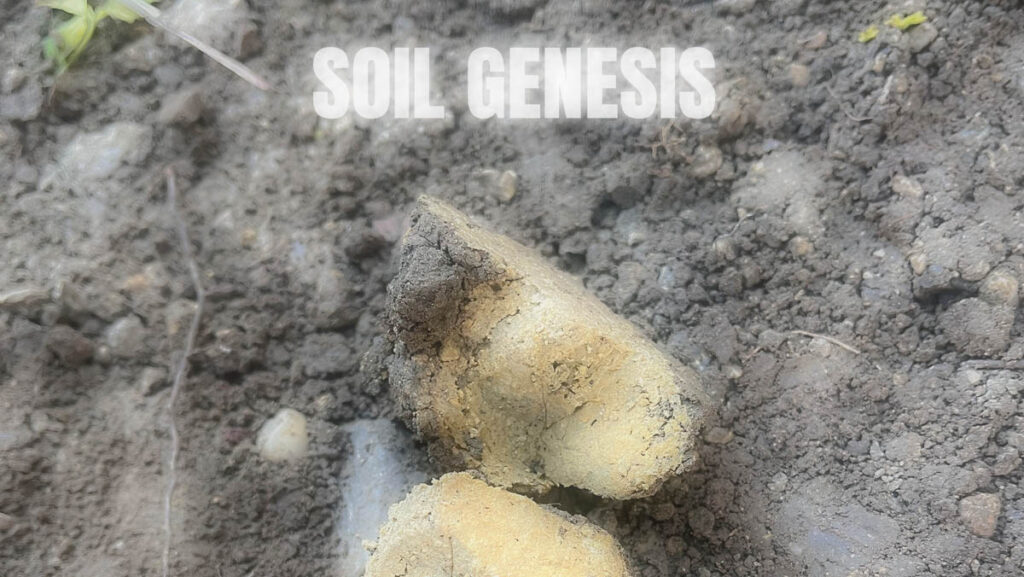
In your practice, you explore the relationship between humans and the environment, and more specifically, the connection between the cosmos and human life on Earth. Could you share more about your interest in this research and how it has developed?
I am fascinated by the world behind the world – that dimension that lies beyond what we perceive and label as reality. We humans tend to believe that we grasp the world in its entirety. This is because our perception gives us a seemingly seamless reality, without breaks or gaps. We are convinced that we can see, hear, smell and feel everything that surrounds us. However, we overlook the fact that we only perceive a tiny section of the actual world and the cosmos. Our senses only register certain areas: We only perceive light waves in the narrow spectrum between violet and red. We only hear sound waves if they lie within a limited frequency range. In contrast, a large number of physical phenomena that permeate the world remain hidden from us. Radio waves, infrasound, magnetism and electric fields elude our direct perception, but are just as real and measurable as the light we can see.
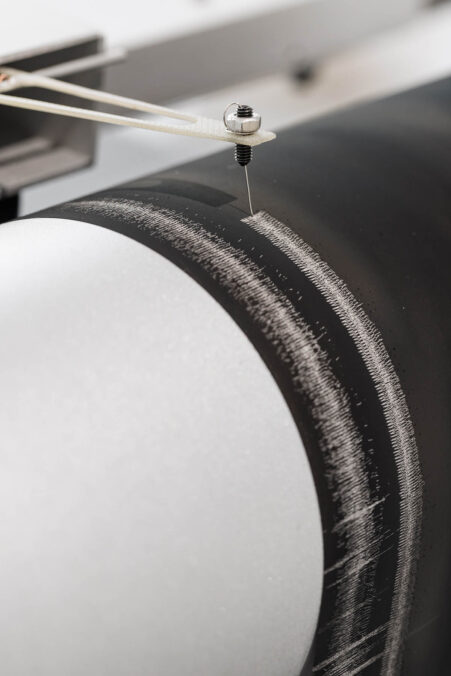
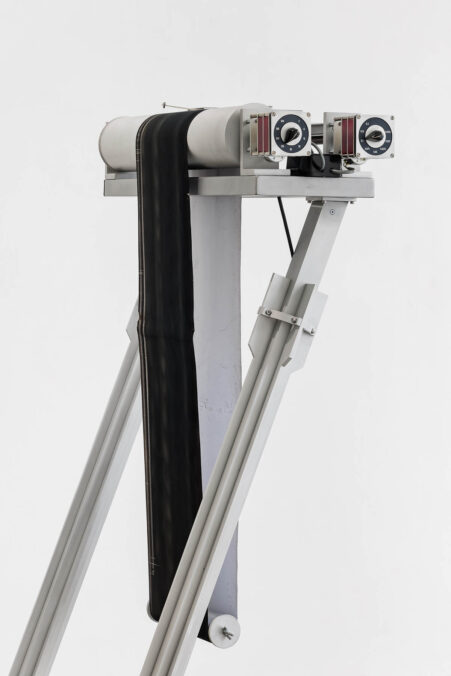
In your work “Outer Space Transmitter”, a radio station for which you also created a parabolic antenna, you developed an alphabet to establish a connection with the cosmos. Could you share a bit more about this work? How does this process of communication occur through this piece?
The concept of the work ‚Outer Space Transmitter‘ is to communicate with extraterrestrials using the universal language of art. To this end, I have trained as a radio operator in order to transmit art into space using a self-developed transmitter. I create the artworks that I send together with other people. The starting point is messages that can be sent to me. I then translate the texts into the ‘extraterrestrial alphabet’ I have developed and use them to create text images. The alphabet is based on a character structure in which each symbol corresponds to a letter of the Latin alphabet. I was inspired by the aesthetics and system of Morse code.
In this regard, do you see art as a connecting point and as a language for possible communication with other forms of life?
Yes, absolutely. I am convinced that there is extraterrestrial life in the universe. For me, art is a universal and cosmic language that can be understood by all living beings – including extraterrestrials. I believe that art could be the key to communicating with extraterrestrial civilisations. Every intelligent life form should have the capacity for reflection and abstraction, which manifests itself in artistic expression. Therefore, I suggest adding the dimension of creativity to the term ‘intelligent extraterrestrial life’. I like the term ‘creative extraterrestrial life’ better, as I am convinced that extraterrestrial civilisations will also have art and culture. I am particularly fascinated by what this art might look like.
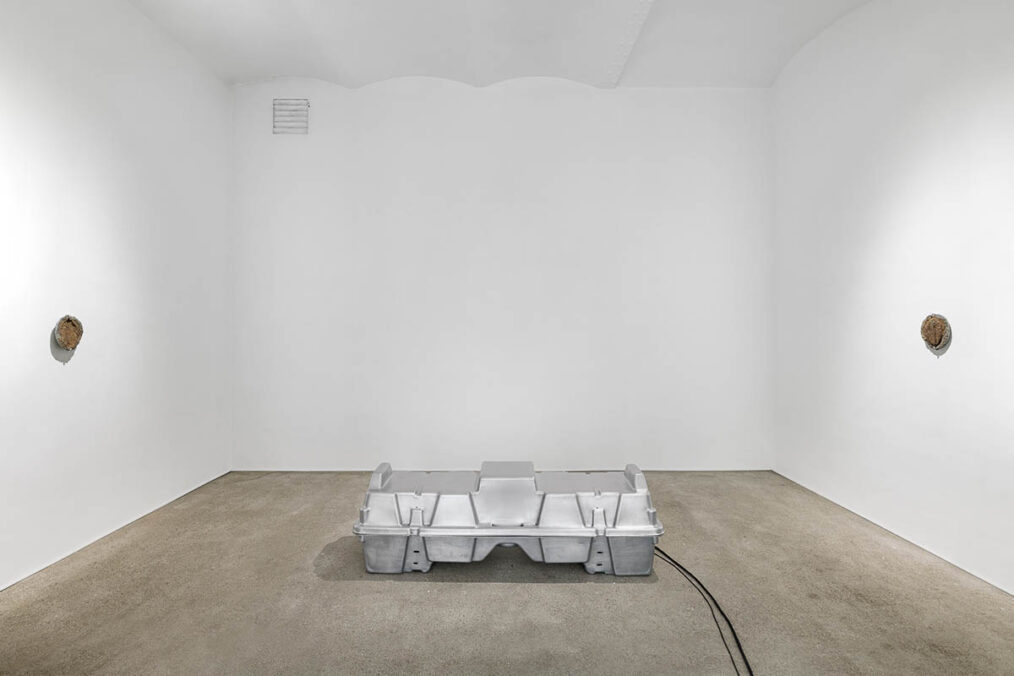
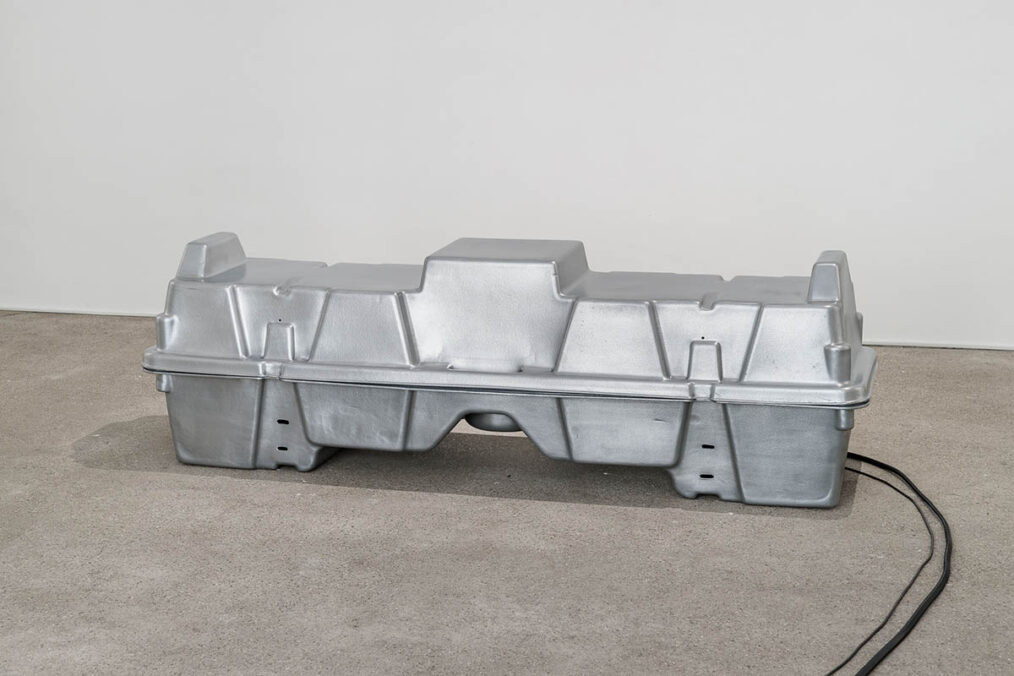
The connection between distant space and Earth is also very present in your exhibition “Trilobit” at [tart vienna], the project space of Galerie Elisabeth & Klaus Thoman. When I first entered, I heard a sound, reminiscent of something heavy bouncing off a metal wall. The sound recurred, and soon I noticed a metal object connected to a seismograph, which apparently was functioning in the gallery space. Could you tell more about this metal construction?
In the exhibition, the capsule-like metal object is connected to a seismograph, whereby the two elements are spatially separated from each other. The room in which the capsule-like object is located looks like a burial chamber guarded by two fossils. Vibrations are generated within the metal object, which are recorded by the seismograph. These vibrations are visualised for the viewer. However, the vibrations themselves remain beyond their physical perception, as they lie beyond the perceptible spectrum. At the same time, the viewer perceives the vibration as sound. A metallic bang is heard every 10 seconds. While the 450 million year old fossils speak of a time long past, the real-time measurements of the seismograph refer to the here and now.

As you mentioned, near the seismograph, trilobite fossils hang on the wall, evoking a very distant past. How do you engage with the concept of time here?
Time is one of the greatest mysteries of physics. Isn‘t it fascinating that time passes faster on the moon than on earth? Temporality, and especially infinity, are beyond the imagination of most people – and even many physicists. They often contradict our everyday experiences and the way we perceive and understand the world. The two fossils in the exhibition are trilobites, prehistoric sea creatures that symbolise life on the early Earth and the origins of life that lie far before human existence. Although water is the basis of life on earth, the oceans of our planet are less explored than our solar system. While we explore space intensively, the depths of Earth‘s oceans remain an equally unknown terrain. However, they could provide crucial insights into the beginnings of life on Earth and clues to possible life forms on other planets.
In your dioramas near the seismograph, you incorporate meteorites and volcanic stones into multilayered structures. Observing the meteorite might evoke thoughts of distant space, while our reflection in the mirrored surface draws us back into the gallery space, blending the distant with the present moment. How do you work with stones and surfaces in these sculptures? Does this, in some way, relate to the role of humanity in your work?
For me, meteorites as extraterrestrial stones and volcanites as terrestrial stones represent material that existed before human history and will continue to exist after it. While lava emerges from the earth‘s interior to the surface and solidifies into rock, meteorites of unknown origin have travelled a cosmic path on their way into the earth‘s atmosphere. The panspermia theory states that life could have arrived on Earth from space via meteorites, which transported organic molecules or microbes and contributed to the emergence of life.
In my dioramas, both the extraterrestrial and the terrestrial are brought together. In this one moment of their largely unknown origin, they are fixed in space and time.
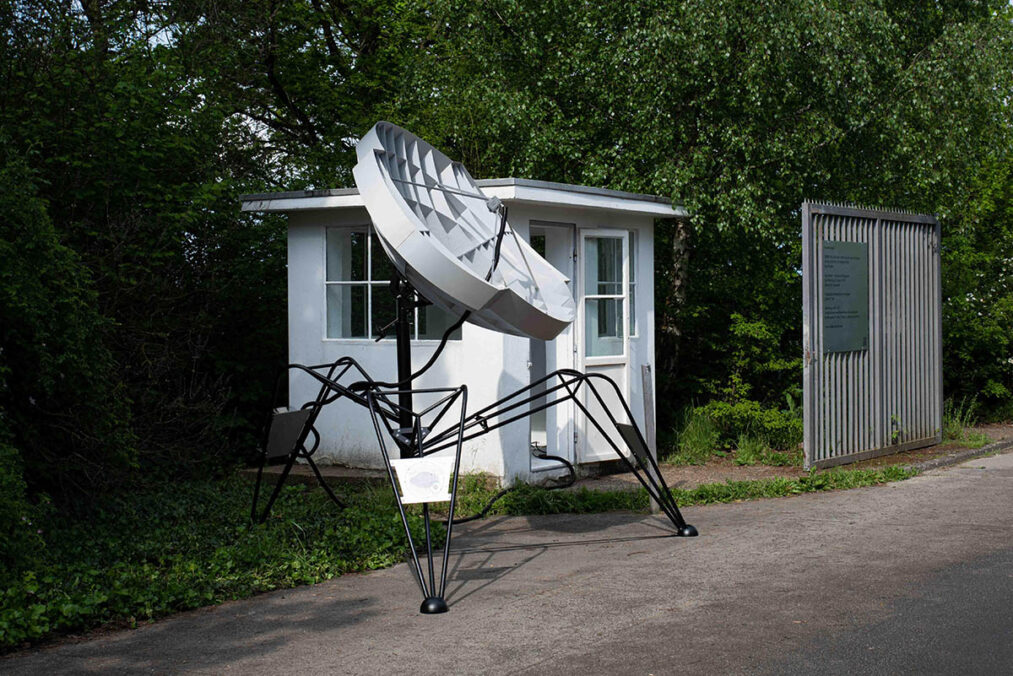
Would you say that by referencing both the distant past and the unknown space, you are also reflecting on our future?
I see human beings as part of cosmic matter, endowed with the extraordinary capacity for self-reflection. We are preoccupied with the complex and mysterious question of our own future – a question that inevitably leads to religious and philosophical considerations. Nevertheless, humanity remains almost insignificant in the overall picture of the cosmos. Compared to the entire history of planet Earth, the existence of mankind takes up just two minutes. On a cosmic level, our existence seems almost trivial. At the latest when the sun collapses one day and the earth is swallowed up in its gravitational field, everything material that defines our existence will disappear, just like humanity itself. Isn‘t it impressive that our ego plays such an important role despite the triviality of our existence?
Mona Schulzek – www.monaschulzek.de, www.instagram.com/mona_schulzek/



